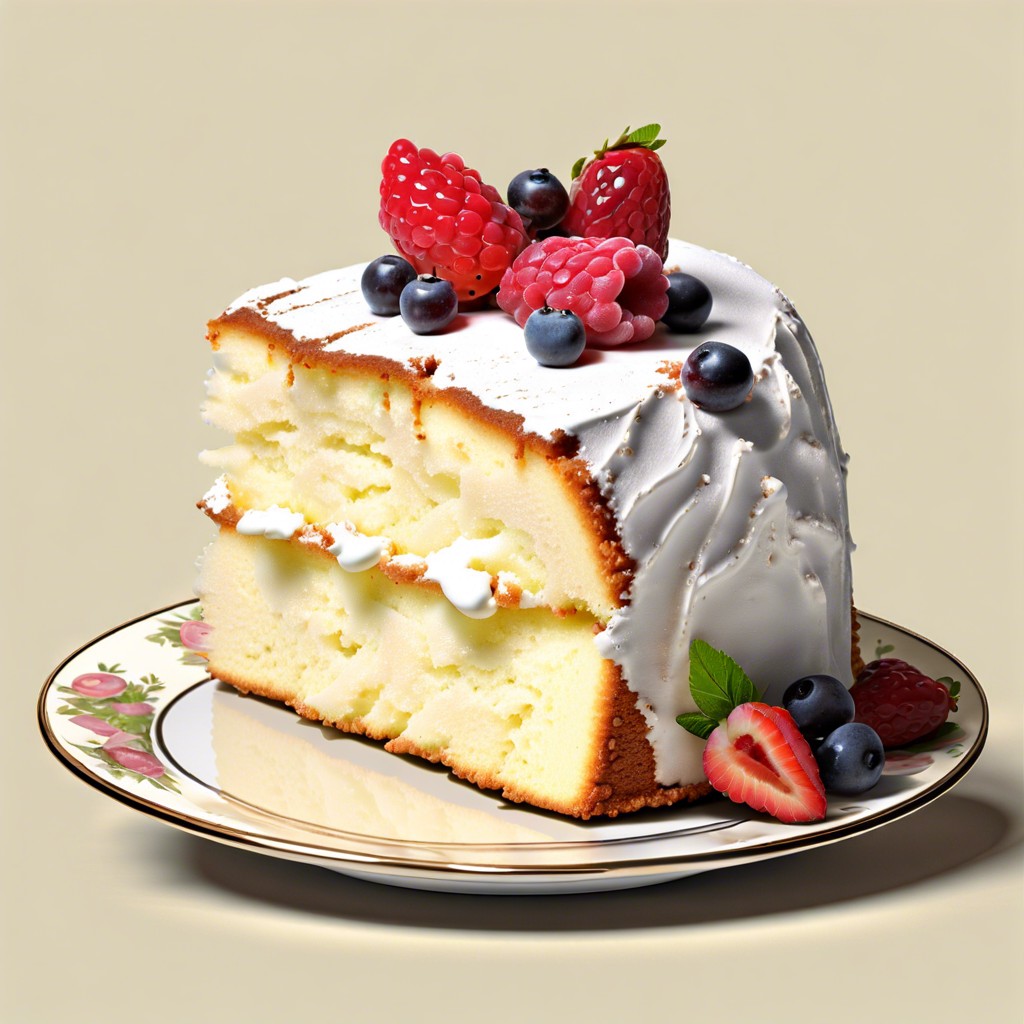Last updated on
Learn how to identify and select authentic vintage Pyrex, ensuring you invest in quality pieces for your collection.
Key takeaways:
- Vintage Pyrex can be found at thrift stores, estate sales, antique shops, online marketplaces, flea markets, and garage sales.
- The value of vintage Pyrex is determined by factors such as rarity, condition, completeness of sets, market trends, and local availability.
- To authenticate vintage Pyrex, examine markings, investigate patterns, check weight and glass quality, consider wear and tear, consult reference materials, and seek expert validation.
- Care for vintage Pyrex by using soft cleaning materials, avoiding abrasive sponges and harsh cleaners, avoiding drastic temperature changes, not microwaving, cushioning when stacking, and storing in a secure location.
- When displaying vintage Pyrex, avoid direct sunlight to prevent color fading.
The History of Pyrex
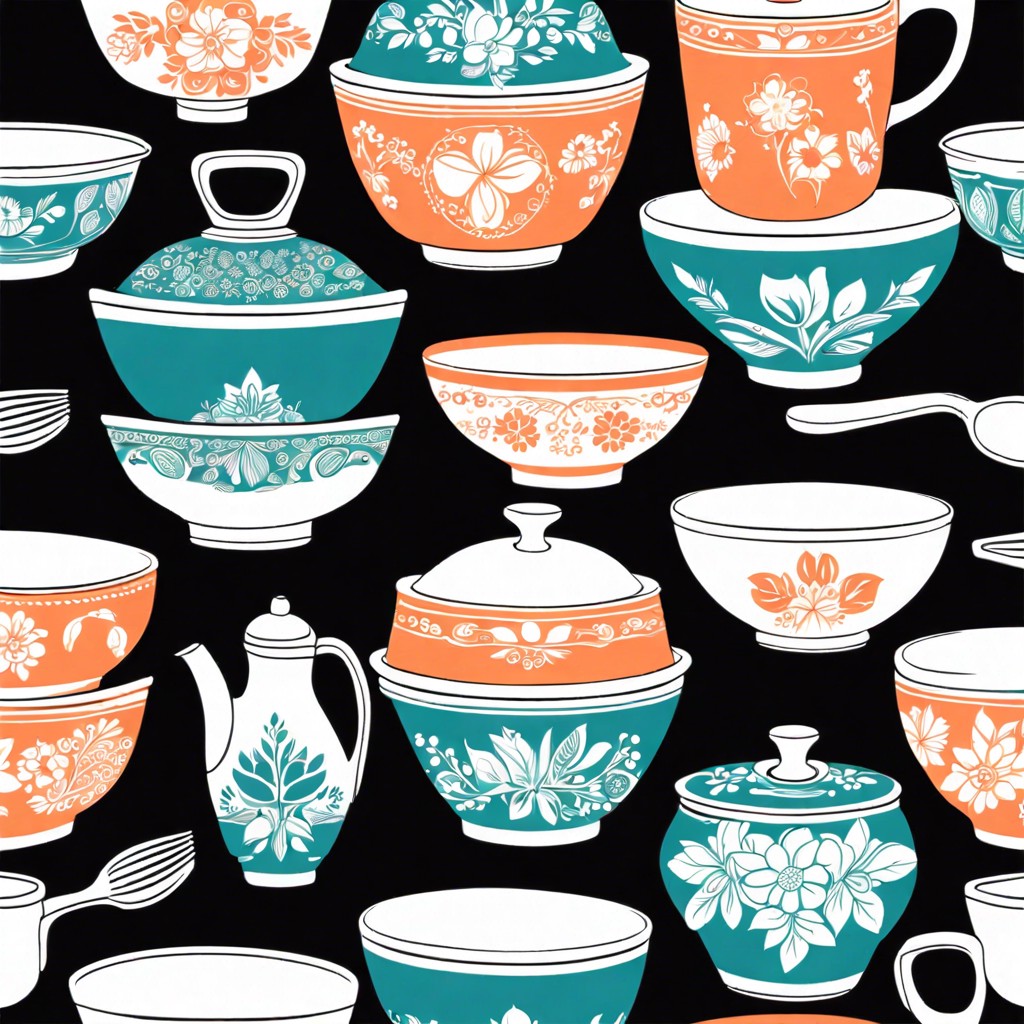
Pyrex glassware, developed by Corning Glass Works, came into being in 1915. It owes its name to the Greek word “pyr,” meaning fire. Born from a quest to create a robust material for railroad lanterns, the borosilicate glass recipe was repurposed for kitchenware, heralding a revolution in cooking and baking.
The early 20th century saw the proliferation of clear Pyrex, prized for its durability and heat resistance. The 1940s introduced colorful Pyrex with the debut of the primary color bowl set, transforming kitchen shelves across America. Pyrex’s patterns over the decades reflected contemporary tastes, from the Atomic Age to the homespun styles of the 1970s.
By the mid-century, Pyrex had become a staple in American kitchens due to its versatility – it could go directly from refrigerator to oven without risk of shattering. Thus began the tradition of passing Pyrex from generation to generation, contributing to its current status as a collectible.
Where to Find Vintage Pyrex
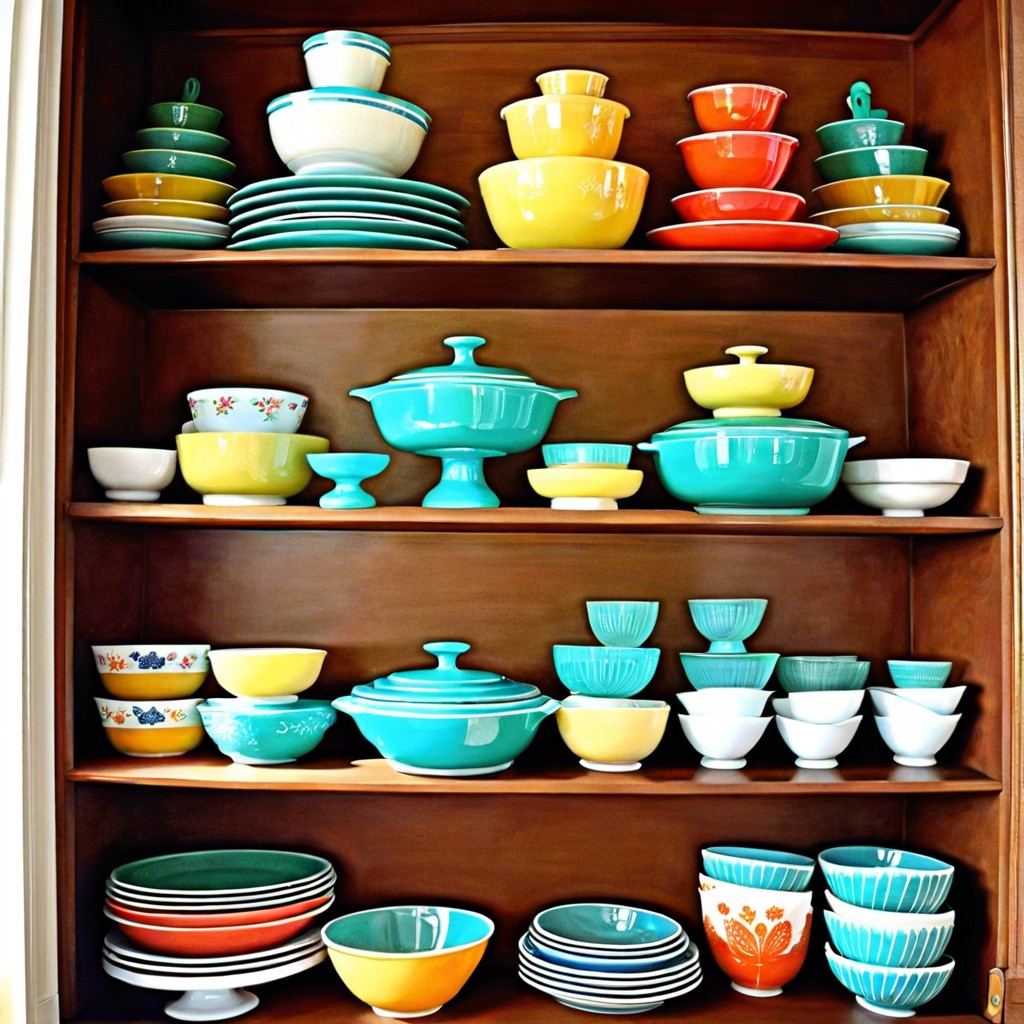
Thrift stores and estate sales are often treasure troves for vintage Pyrex enthusiasts. These venues can provide a glimpse into the past, showcasing a variety of patterns and pieces at potentially low prices. It’s important to arrive early to have the best chance at finding these collectibles, as they tend to be in high demand.
Antique shops also offer a curated selection, though prices may reflect the shop owner’s knowledge of the items’ value. For those who prefer shopping from home, online marketplaces and auction sites present vast inventories. Online communities and forums dedicated to Pyrex collecting can be valuable resources for locating specific pieces.
Seasonal flea markets and garage sales present opportunities to unearth vintage Pyrex, sometimes at bargain prices. Networking with other collectors can lead to tips on upcoming sales and available pieces.
When searching for vintage Pyrex, consider local ads or social media groups where enthusiasts in your area may list items for sale or trade. Remember to inspect pieces thoroughly for authenticity and condition, especially when buying in person.
How to Determine the Value of Vintage Pyrex
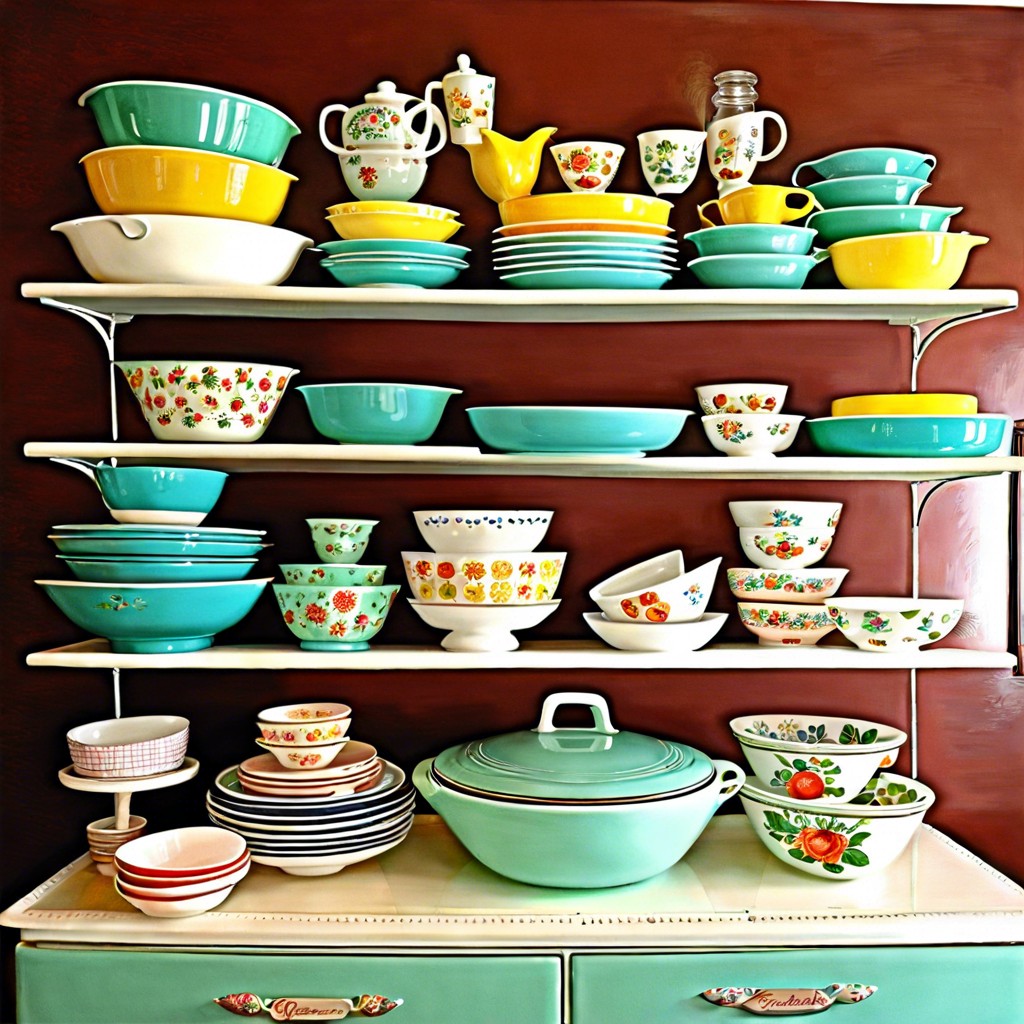
Determining the value of vintage Pyrex involves several factors. Pattern and color rarity directly affect desirability; limited edition releases like the Turquoise Diamonds pattern often fetch higher prices. Condition is paramount; pieces with no chips, cracks, or dishwasher damage are more valuable. Original sets intact with lids are typically worth more than individual items.
The presence of complete markings and stamps also contributes to an item’s worth. Look for the Pyrex logo, model numbers, and the size marking on the bottom. Completeness of sets is crucial; for example, a full set of nesting bowls is worth more than the sum of its individual pieces.
Market trends can influence value. Nostalgia can drive prices up, as collectors may be willing to pay a premium for pieces that remind them of their childhood. Finally, local availability can impact price; items that are common in one region may be rare and therefore more valuable in another.
How to Authenticate Vintage Pyrex
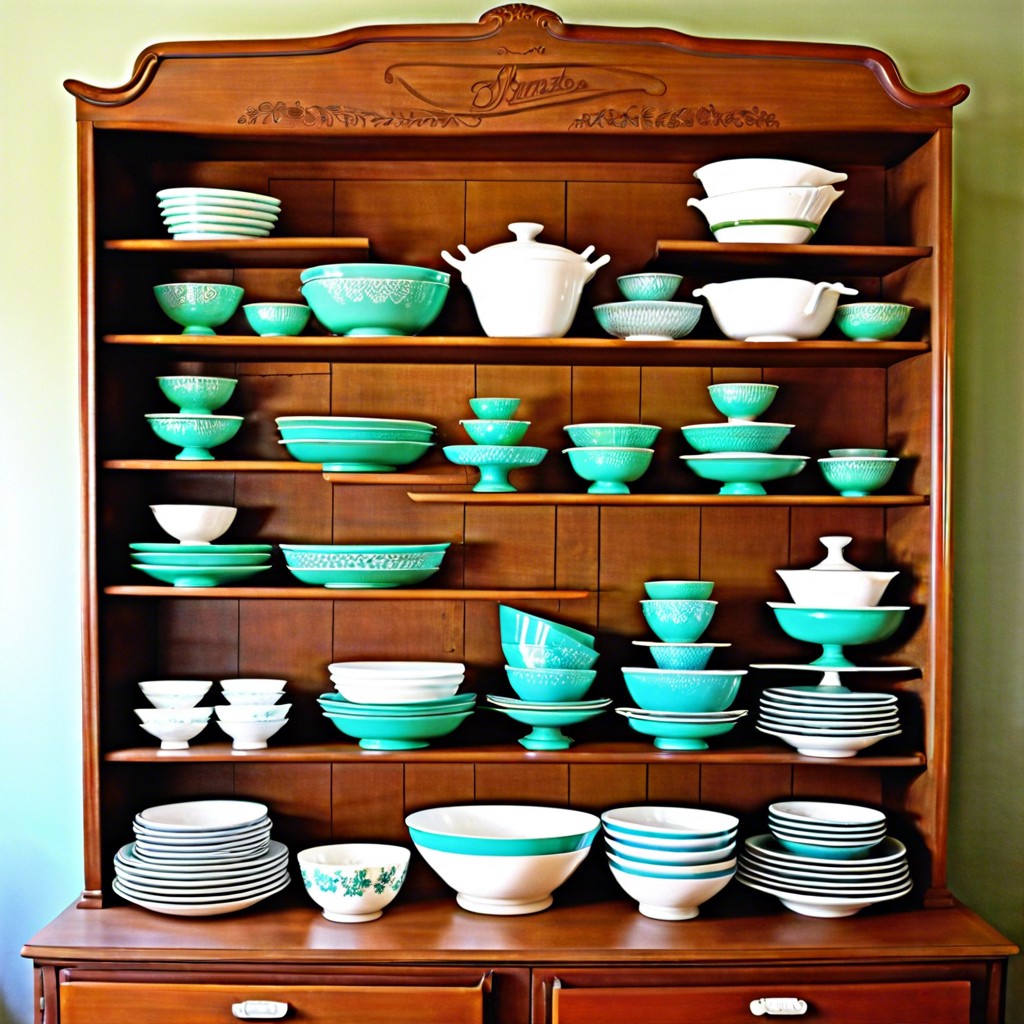
Examine the markings. Genuine Vintage Pyrex pieces typically feature a backstamp on the bottom, indicating the brand name and sometimes the model number. These stamps may vary depending on the age and series of the piece.
Investigate the pattern. Authentic Vintage Pyrex will have consistent coloring and patterns that match the specific style released during its manufacturing period. Discrepancies in the pattern or color may signal a reproduction.
Check the weight and glass quality. The original Pyrex is known for its substantial weight and durability. If the item feels unusually lightweight or brittle, it may not be authentic.
Consider the wear and tear. Authentic vintage pieces will show signs of wear appropriate for their age. Overly pristine items, without any scratches or marks from use, might actually be newer reproductions rather than vintage.
Consult reference materials. Many books and online resources provide information on specific Pyrex patterns, production years, and other distinctive features that can aid in verification.
Seek expert validation. If in doubt, consult with antique specialists or experienced collectors who can provide insights based on extensive knowledge of Vintage Pyrex.
Remember that while minor imperfections can authenticate age, significant damage or alterations can affect the value of the piece.
How to Care for Vintage Pyrex
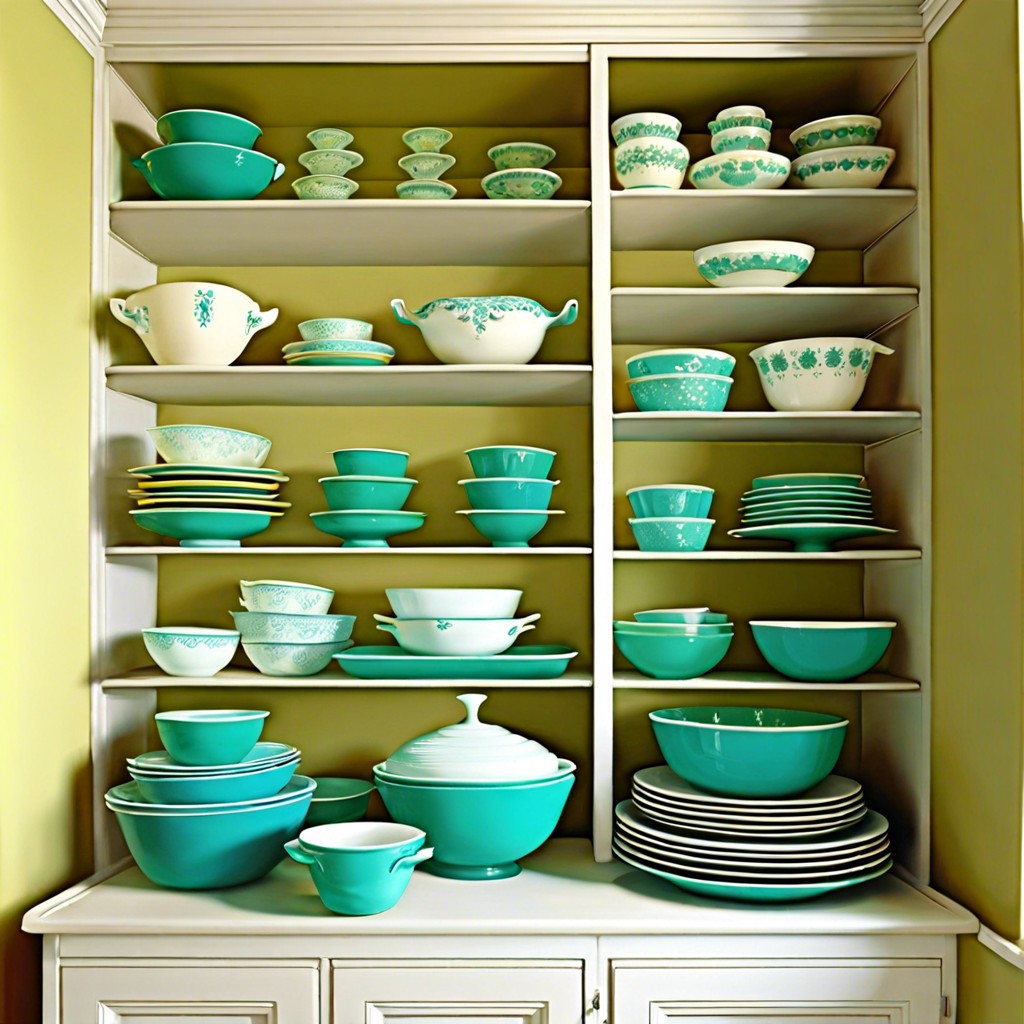
When handling vintage Pyrex, always use soft cleaning materials to prevent scratches. Gentle dish soap with warm water is ideal for washing. Avoid abrasive sponges and harsh chemical cleaners; they can damage patterns and colors. Dry the pieces immediately with a soft towel to prevent water spots.
For stuck-on food residue, soak the dish in warm soapy water, then use a plastic scraper or a dish brush with soft bristles. Do not use metal utensils or pads; these can scratch or chip the glass.
Avoid drastic temperature changes when using Pyrex. Sudden shifts can cause thermal shock, potentially resulting in shattering or cracking. Therefore, do not transfer dishes directly from the refrigerator to the oven or vice versa.
Microwaving vintage Pyrex is not recommended. The high heat can fade the patterns and colors over time, diminishing the piece’s aesthetic and value.
When stacking Pyrex, cushioning between the dishes with paper towels or felt liners can prevent scratches and chips. Always store them in a secure location where they won’t easily be knocked over or put under excessive weight.
For display purposes, avoid direct sunlight which can fade the colors over time. Opt for a shaded area where the pieces can be appreciated without risking sun damage.

